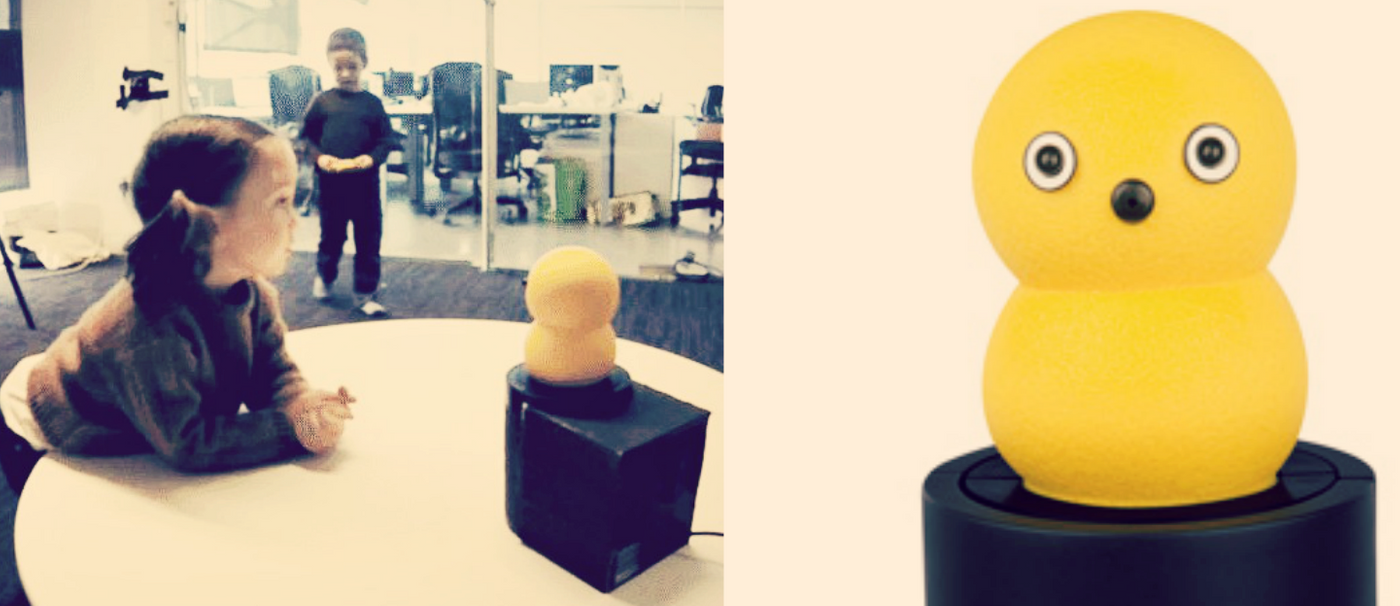How a Social Robot Helped Kids Fight Less
Many adults have tried to help kids argue less, perhaps as parents or teachers. If not, they have certainly been a kid and likely remember a few “conflict-resolution challenges" from their own youth. Researcher Solace Shen and her colleagues from Cornell University and University College London carried out an experiment examining if a remotely-controlled social robot might be able to help young people resolve disagreements over toys. They found that the robot they used, called “Keepon,” could do just that.
Keepon was developed by scientists Dr. Hideki Kozima and Dr. Marek Michalowski of BeatBots, a company which specializes in designing socially interactive robots. Keepon has been in use since 2003 and is “designed for interaction with children — particularly those with developmental disorders such as autism,” according to the company site. It is relatively small – about 10.5 inches high – and has a simple face, a yellow and rounded appearance, and soft rubber skin intended for little hands to touch. Keepon can look around attentively, nod, rock, bounce and dance – it was even featured in the band Spoon's "Don't You Evah," music video, which is included at the bottom of this article.
A microphone is located in Keepon’s nose and there are cameras in its eyes. A therapist, researcher or other specialist can receive input from these devices and puppeteer Keepon from a second room, as occurred in this experiment. This use of the robot and method of control is referred to as a Wizard-of-Oz (WoZ) mode.
The Experiment
“Children were all excited to have a chance to play with a robot,” Shen told Labroots, adding that most reacted positively and “were immediately engaged in talking to Keepon and asking Keepon questions.” A few were disappointed the robot was small and stationary, and some of the younger ones took a few minutes to warm up to Keepon.
“Overall, the majority of the children were delighted to have Keepon in the play session and also enjoyed learning about Keepon after the study session,” she explained.
The children Keepon helped in these tests were placed in a setting that purposefully created toy scarcity.
“We arranged children’s play material so that there were only one of certain key pieces (e.g., only one ice cream cone in a Lego Duplo ice cream set, only one controller for a remote control car),” the researchers explain in their realted paper. A total of 32 pairs of children ages three to six participated in a 50-minute play period consisting of five activities facilitated by Keepon. Keepon was introduced to the kids as an inquisitive and silly new friend and also as the director of their play, who would talk with them about their activities and let them know when to switch toys. Keepon sat on the table near the children and an experimenter remained present in the room at all times.
The play pairs were either assigned a mediation or control condition; in the mediation condition, Keepon tried to help them resolve conflicts directly. In the control sets, Keepon only facilitated play, encouraging their exploration and telling them when to switch up their games. Kids were told to expect a whistle noise and then assistance from the robot if a conflict occurred. Conflict was defines for them as “when kids don’t agree with each other." When Keepon was in mediation mode, it said, “Stop. I see a conflict happening,” to get their attention and engage them in resolution.
Keepon guided resolutions by asking questions such as, “What’s one way you can think of for all of you to get what you want?” and then offering suggestions if the youth did not come up with their own plan.
The Results
The scientists found that the young kids were about four times more likely to resolve the conflicts “constructively” when the robot helped them directly, “compared to when they played with a robot that only facilitated and directed the play session," according to the study.
Keepon helped pairs choose methods such as taking turns, trading, sharing, playing together or other “settlements,” like playing “Rock-Paper-Scissors.” The researchers say these options are more “consensual” and beneficial to both parties than the results children typically end up with among themselves; without conflict-resolution support and education, kids’ solutions often involve a clear winner and loser. As seen in the video above, some of the young participants also learned to return to the robot for help and then were able to resolve disagreements peaceably in a quicker fashion.
Whether Keepon could help kids get along better one day without having its actions remotely controlled is yet to be seen. The authors also point out that the kids in the study came from mostly middle to high socioeconomic status (SES) households.
“It is possible that a different form of interaction paradigm would be more effective for children from low SES households, as these children tend to be less exposed to formal social-emotional learning and conflict resolution training,” they write, citing a 2007 study into how preschool programs can improve cognitive control, which considers the role of socioeconomic factors. “Supporting this population is a critical issue for future work,” the experimenters also state.
“I would love to continue this line of work and am thinking about ways of extending this line of investigation to other populations and domains,” Shen said.
“’Stop. I See a Conflict Happening.’ A Robot Mediator for Young Children's Interpersonal Conflict Resolution” by Solace Shen, Malte F. Jung and Petr Slovak from Cornell University and University College London was presented at the 2018 Human Robot Interaction Conference in Chicago.









